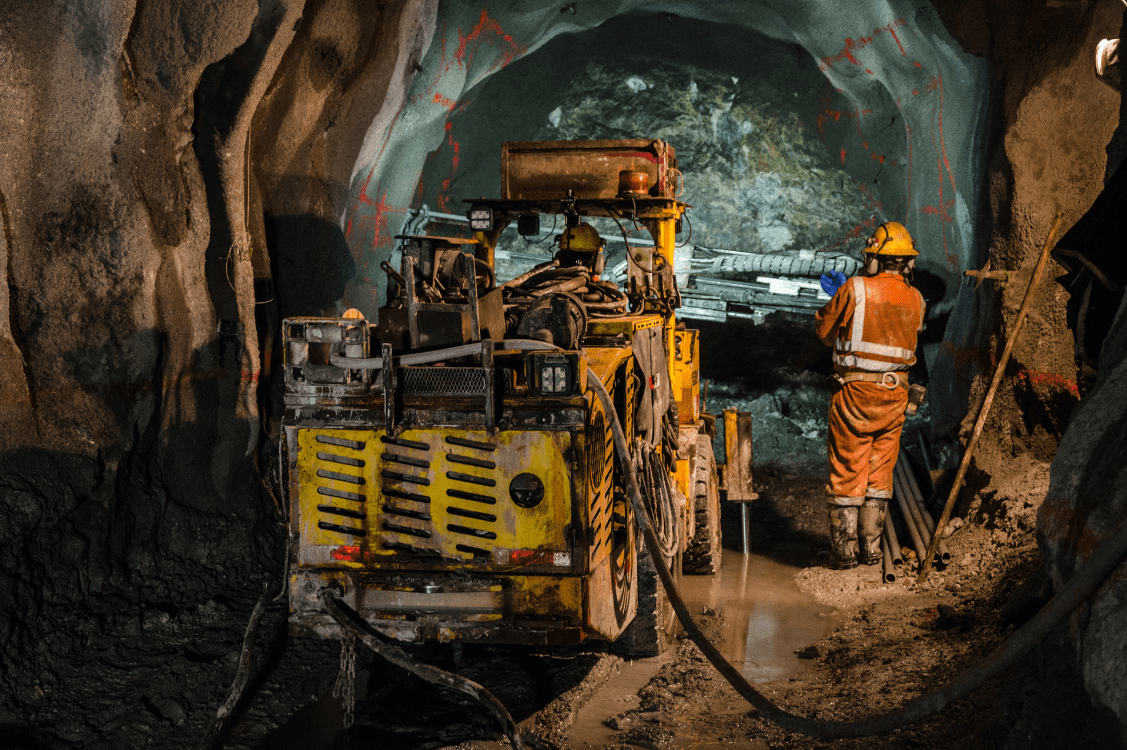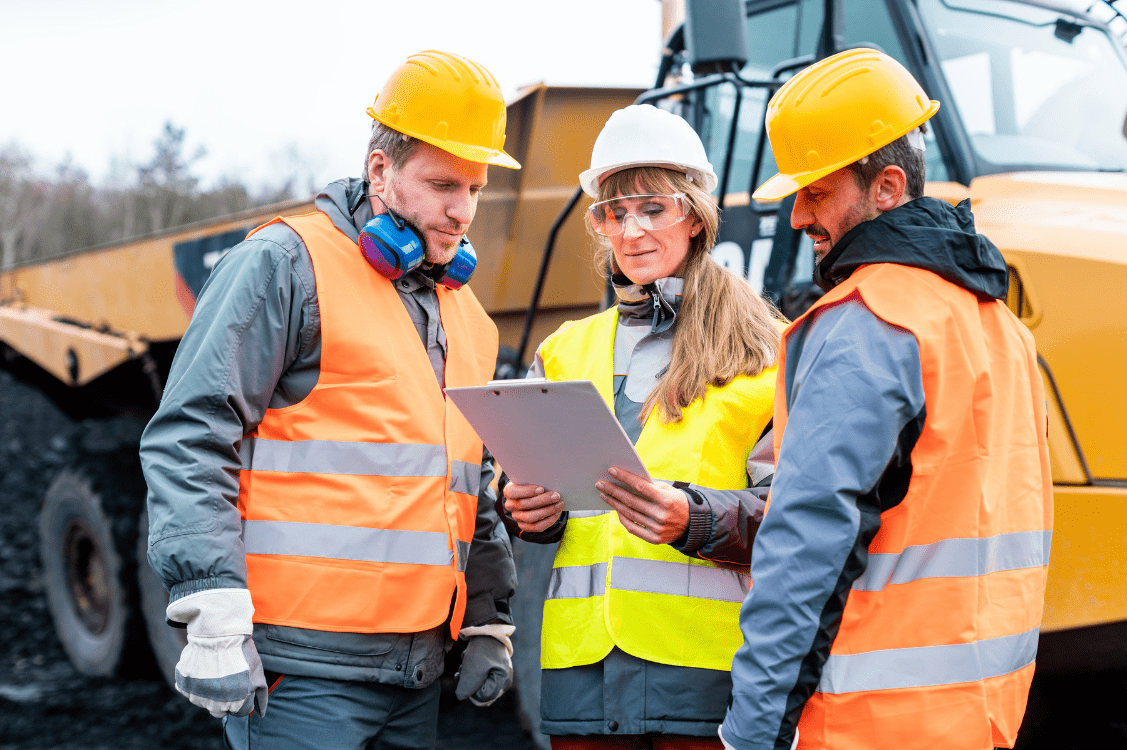How to balance safety and productivity through a mining risk assessment
The mining industry is no stranger to risk, from worker safety concerns to heightened regulations and inconsistent demand. Balancing safety and productivity is imperative for success in such a landscape. Here is how risk assessment could help.
How to balance safety and productivity through a mining risk assessment
The mining industry is no stranger to risk, from worker safety concerns to heightened regulations and inconsistent demand. Balancing safety and productivity is imperative for success in such a landscape. Here is how risk assessment could help.
Ensuring safety and productivity in mining
Both safety and productivity are important considerations in the mining industry as one reinforces the other. Ensuring the safety of workers is necessary for streamlined operations, maintaining regulatory compliance, and achieving a bottom line that ensures continuity.

Safety in mining operations
Labour is the most critical asset in mining, and ensuring the safety of personnel can be done through a 1-2-3 risk management approach, which is the industry standard for mining. This approach involves categorising risks into three separate levels and implementing mitigation measures for each depending on their severity and practicality of management.
Level 1 risks are eliminated at all costs with the most effective mitigation strategies. If this is not reasonable, these become Level 2 risks where clearly defined steps must be taken to safeguard against them. Level 3 risks are risks that are avoided through administrative controls like warnings.
This approach enables mining companies to categorise risks comprehensively and ensure a high level of safety for employees across the organisation.

Safety in mining operations
Labour is the most critical asset in mining, and ensuring the safety of personnel can be done through a 1-2-3 risk management approach, which is the industry standard for mining. This approach involves categorising risks into three separate levels and implementing mitigation measures for each depending on their severity and practicality of management.
Level 1 risks are eliminated at all costs with the most effective mitigation strategies. If this is not reasonable, these become Level 2 risks where clearly defined steps must be taken to safeguard against them. Level 3 risks are risks that are avoided through administrative controls like warnings.
This approach enables mining companies to categorise risks comprehensively and ensure a high level of safety for employees across the organisation.
Productivity in mining operations
The next aspect of success in mining is productivity. While mining companies need to consistently improve productivity to ensure a higher level of output, it should never be done at the expense of safety. With a mining risk assessment, companies can dramatically improve their productivity while also maintaining adequate safety measures for workers.
Risk assessments allow mining companies to identify bottlenecks in their operations where productivity is hampered, prioritise and address risks that have the highest impact on productivity, and optimise resource allocation based on identified risks to achieve peak efficiency.
Furthermore, risk assessments can also enhance the resilience of the supply chain by minimising delays and disruptions. They also offer a well-defined structure for emergency response planning, allowing mining companies to respond quickly to unexpected events with backup systems and rapid response teams.


Productivity in mining operations
The next aspect of success in mining is productivity. While mining companies need to consistently improve productivity to ensure a higher level of output, it should never be done at the expense of safety. With a mining risk assessment, companies can dramatically improve their productivity while also maintaining adequate safety measures for workers.
Risk assessments allow mining companies to identify bottlenecks in their operations where productivity is hampered, prioritise and address risks that have the highest impact on productivity, and optimise resource allocation based on identified risks to achieve peak efficiency.
Furthermore, risk assessments can also enhance the resilience of the supply chain by minimising delays and disruptions. They also offer a well-defined structure for emergency response planning, allowing mining companies to respond quickly to unexpected events with backup systems and rapid response teams.
Striking the ideal balance with a mining risk assessment
Here is what risk assessments can offer to mining companies that aim to strike the perfect balance between safety and productivity in mining operations.
Hazard identification
A thorough assessment helps in identifying the potential hazards in the mining environment, such as malfunctioning machinery, adverse geological conditions, and human factors.
Risk assessment
Categorising each risk that is identified based on its severity and likelihood of occurring allows for a more in-depth understanding and analysis of the prevalent risk landscape.
Risk prioritisation
Prioritisation eliminates risks with the highest potential for causing harm and is vital as no organisation has the time or resources to address all risks with 100% effectiveness.
Control implementation
Developing and implementing controls for effective management of risks like engineering and administrative controls can reduce the likelihood of harm and the impact of risks.
Productivity measures
Implementing productivity measures that do not compromise the safety of workers such as process optimisation and resource allocation contributes toward achieving the balance.
Regulatory compliance
Ensuring compliance with the stringent regulations imposed and guidelines proposed at the local, state and national level is necessary for maintaining both safety and productivity.
Boost productivity while ensuring safety with SECTARA’s mining risk assessment capabilities
Managing risks in the mining industry is more important than ever before as it has the potential to boost productivity and ensure safety like no other initiative could. SECTARA offers bespoke solutions for the mining industry for risk assessment and management.
SECTARA’s solutions are aligned with global best practices for risk management like ISO 31000 and NIST. Our software solution is simple, precise, and accessible to all risk practitioners.
Sign up for the 14-day FREE trial and witness your risk management prowess skyrocket.
Click the button below to sign up. No credit cards or other commitments are necessary.
Some of the industries we serve
Government
Identify, monitor, and manage systemic risks associated with policy implementation, public safety, and national security with a scalable and configurable risk assessment solution.
Critical infrastructure
Obtain insights to identify and mitigate potential threats to critical infrastructure like energy, transportation, and communication systems through professional risk assessments.
Mining
Ensure safe, secure, and efficient operations and overcome common mining challenges like equipment failure and environmental hazards via a professional risk assessment solution.
Defence
Obtain a comprehensive view of potential threats to national and regional security and implement effective risk management strategies with military-grade risk assessment solutions.
Healthcare
Ensuring the safety of patients, staff, and other stakeholders while managing risks associated with medical procedures and data privacy through a configurable risk assessment solution.
Finance
Identify, monitor, and manage critical risks like market volatility and data breaches with a risk assessment solution to protect stakeholder assets and ensure regulatory compliance.
Consultancy
Help your clients make informed decisions about risk management by leveraging insights from a professional risk assessment solution that helps identify, address, and monitor risks.
Cybersecurity
Protect your digital assets with our advanced cybersecurity risk assessment solutions. Stay ahead of evolving threats and fortify your defences with comprehensive risk assessments.
Education
Identify and mitigate compliance, finance, operational, and reputational risks in processes such as student selection and regulatory adherence with professional risk assessments.
Experience the capabilities of SECTARATM first-hand. Sign up for our 14-day free trial today.
Start your 14-day free trial
What you get with our free trial
2 users (Account Admin, Org & BU Admin, Assessor, Viewer)
2 concurrent assessments
2 organisations & business units
In product training
The ability to export assessments to MS Word
MS Excel treatment plans
White label SECTARATM platform
White-label exported documents
Audit records
Experience the capabilities of SECTARATM first-hand. Sign up for our 14-day free trial today.
What you get with our free trial
2 users (Account Admin, Org & BU Admin, Assessor, Viewer)
2 concurrent assessments
2 organisations & business units
In product training
The ability to export assessments to MS Word
MS Excel treatment plans
White label SECTARATM platform
White-label exported documents
Audit records
Start your 14-day free trial
Frequently Asked Questions
A risk assessment in mining involves the identification and assessment of all risks associated with and related to the mining environment, including physical security risks, cybersecurity risks, regulatory risks, and social risks.
Assessing risk in mining involves several steps. Firstly, all risks must be identified methodically and ranked based on likelihood of occurrence and severity of impact. Once this is done, you can prioritise risks so that the most impactful risks can be addressed first, and less demanding risks can be managed appropriately.
There are many aspects of risks in mining. The most prominent risks are physical security risks including health and safety hazards, cybersecurity risks, regulatory risks, and social risks like backlash from local communities and climate activist groups.



